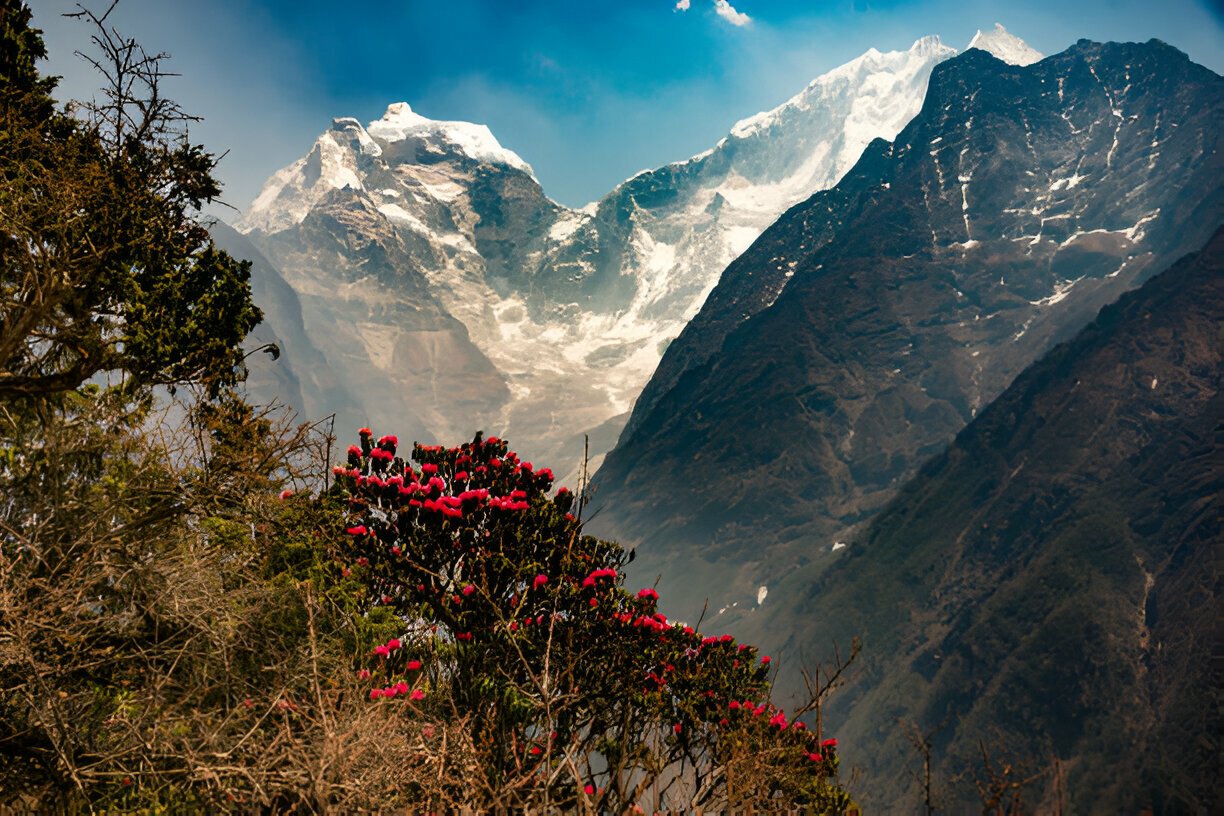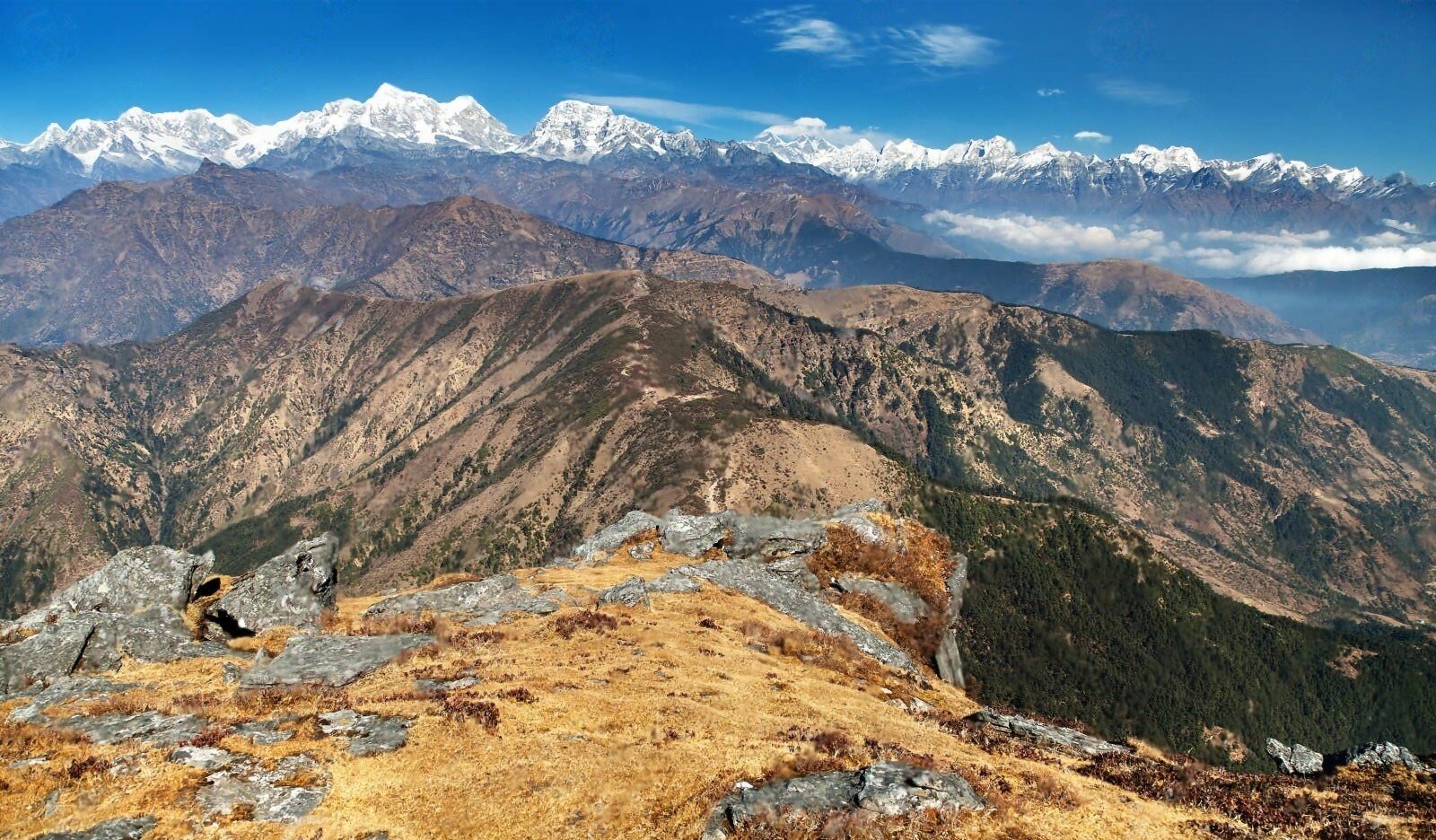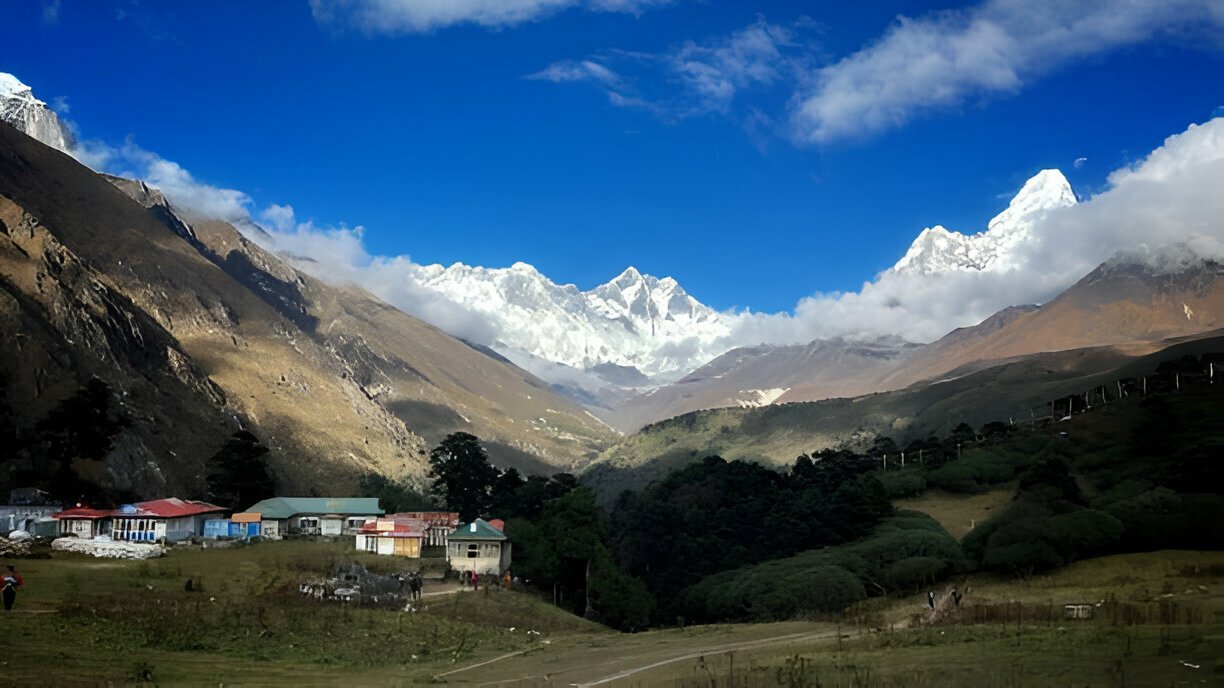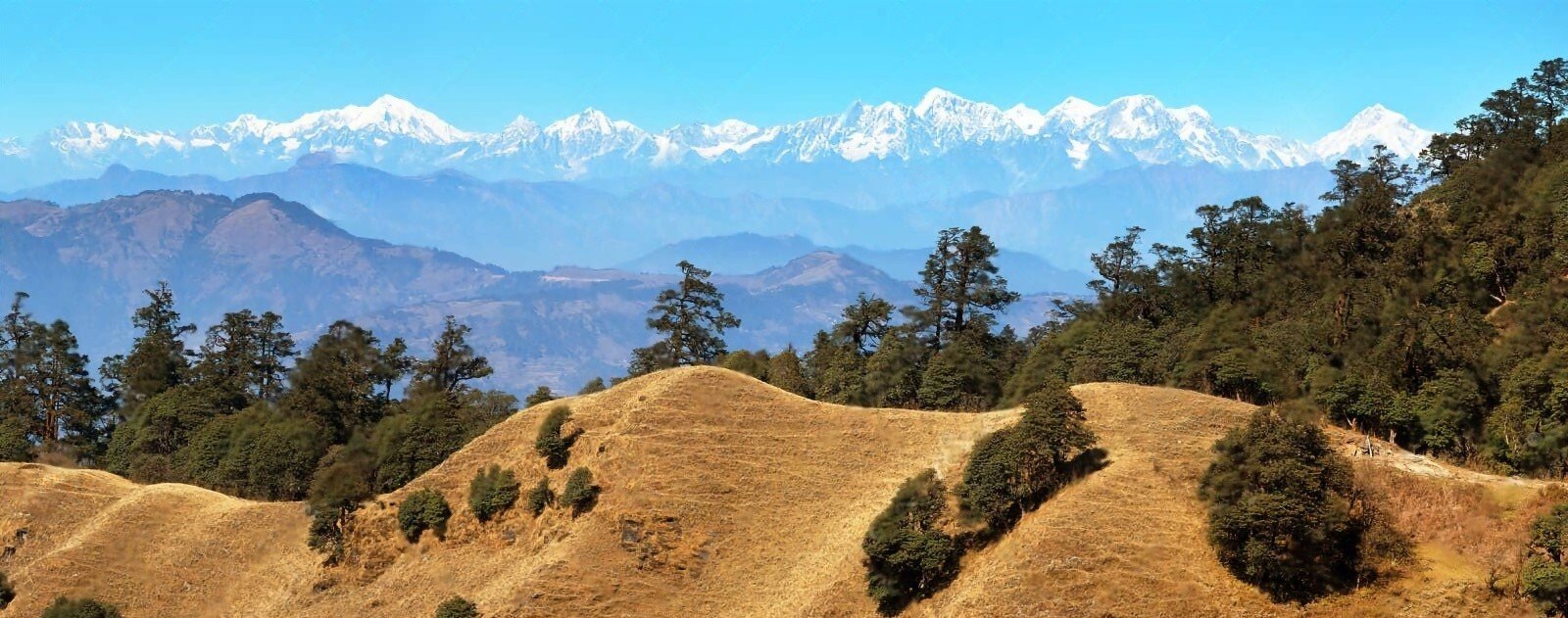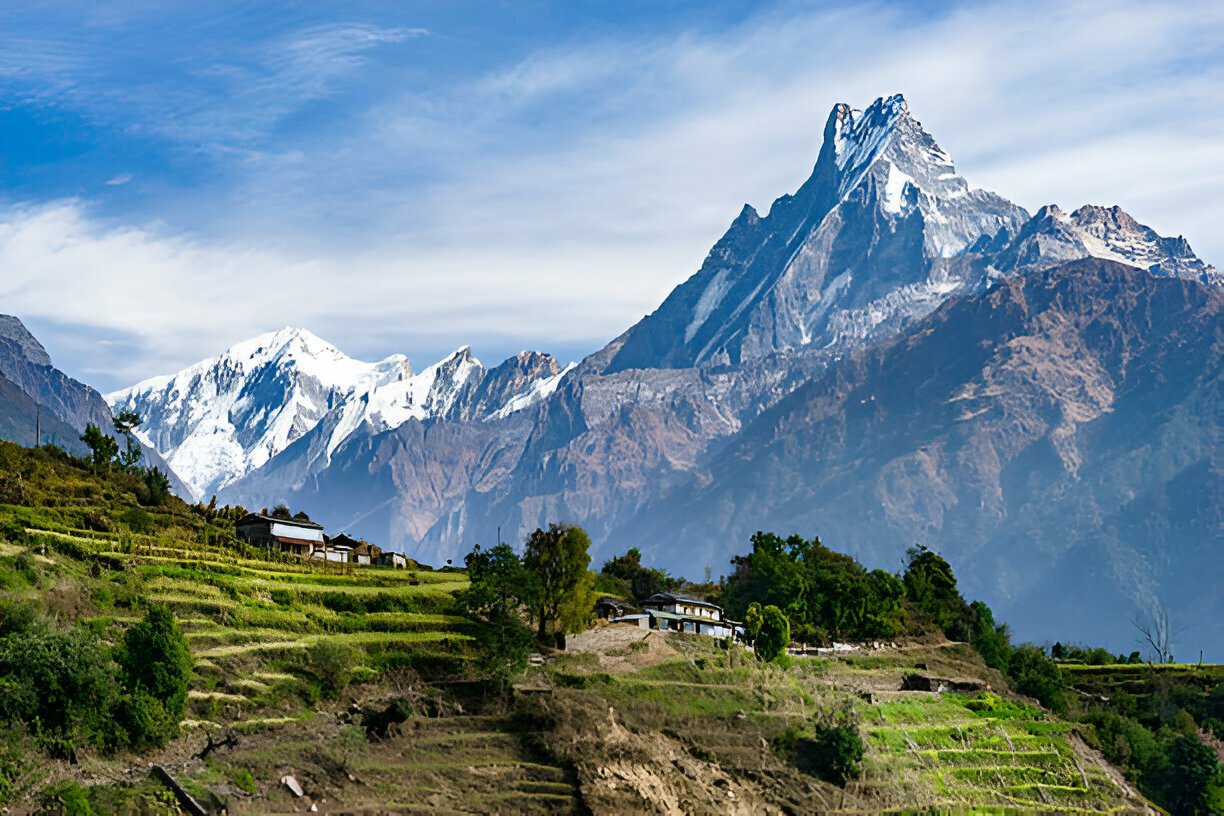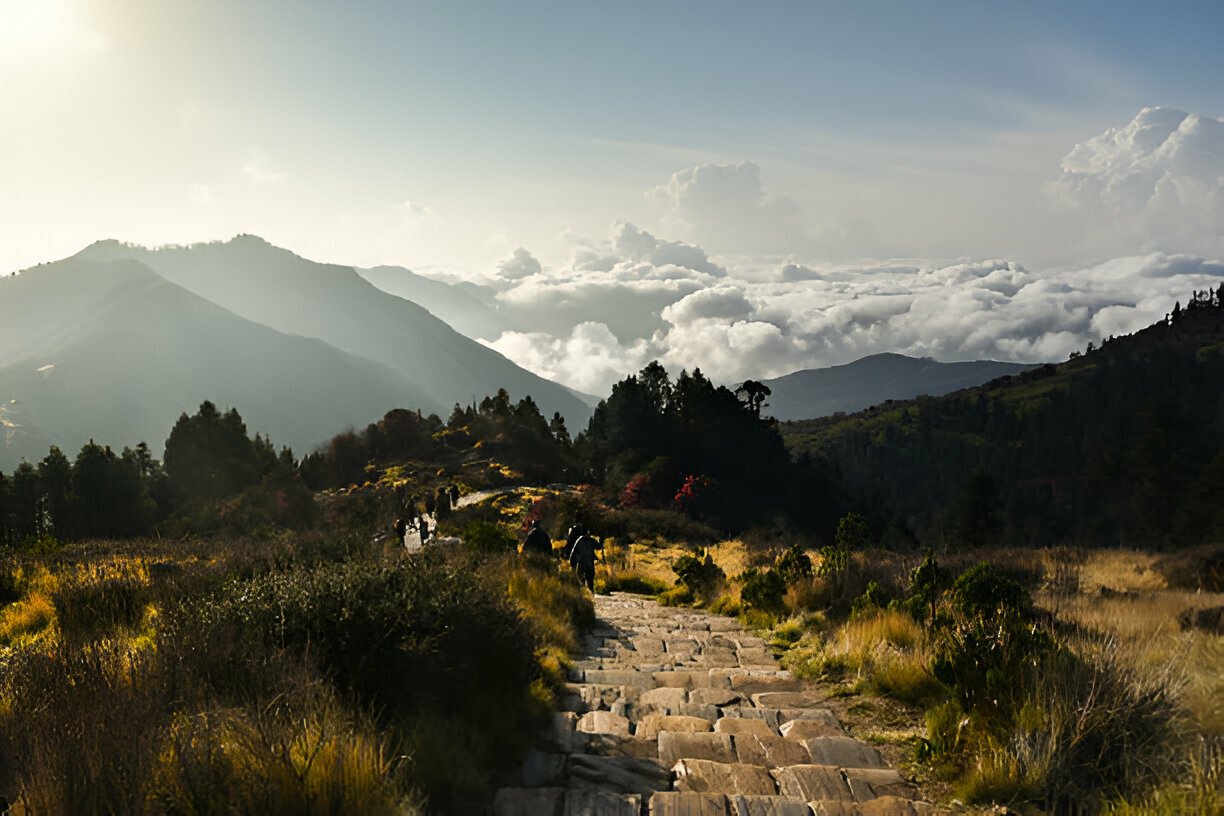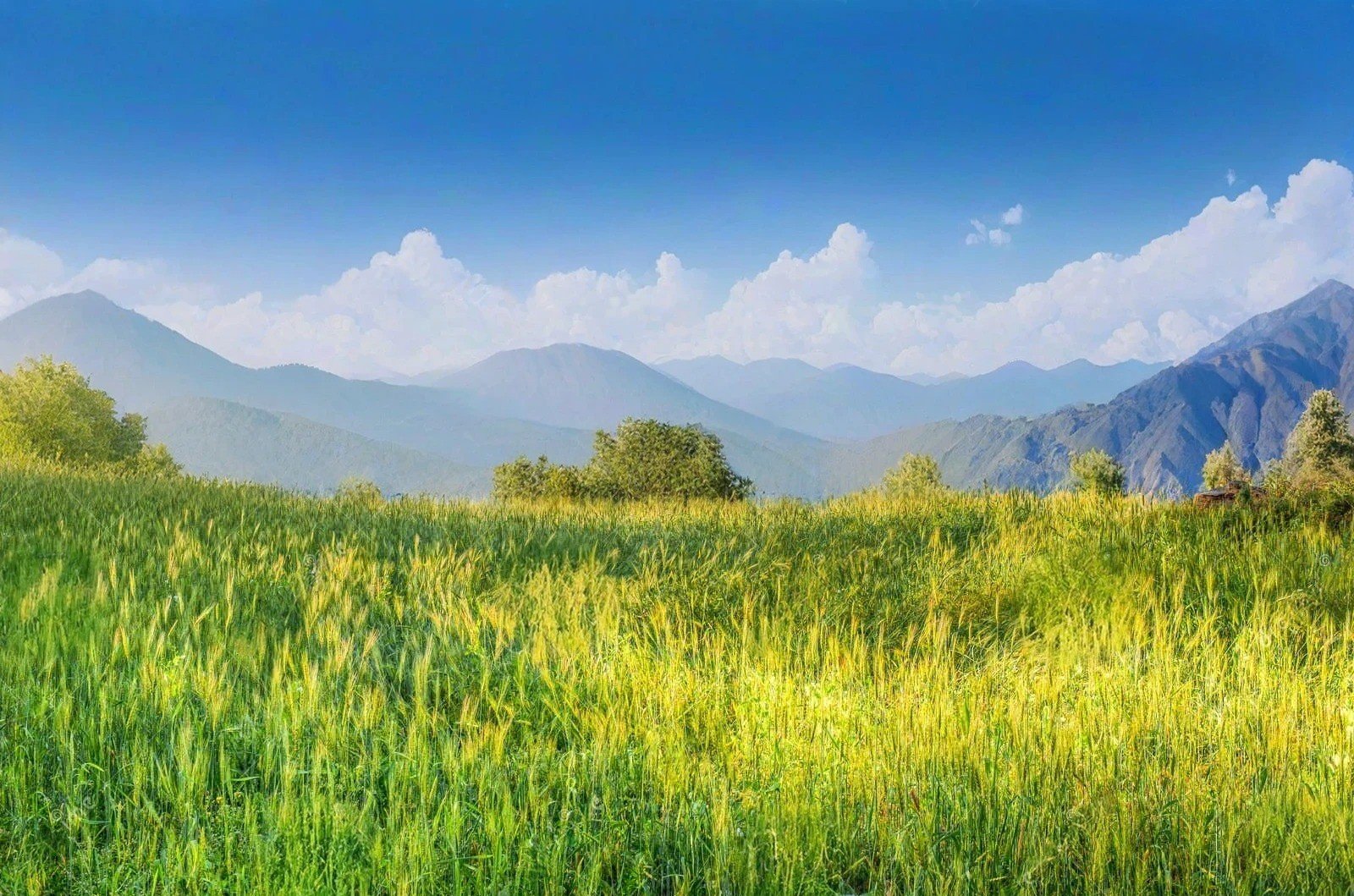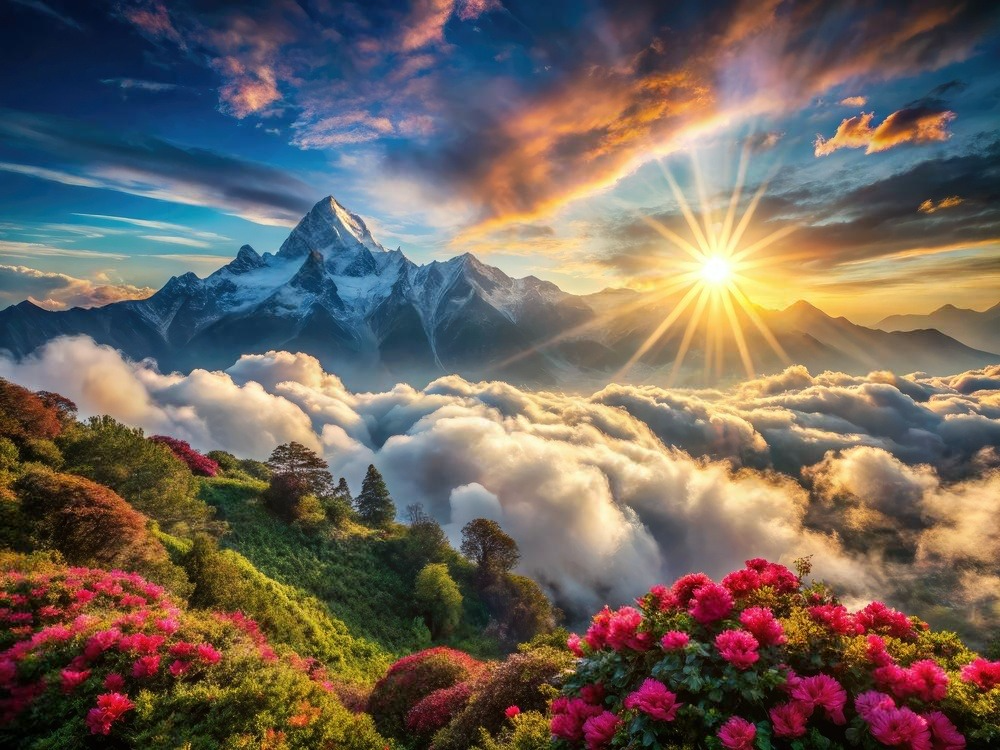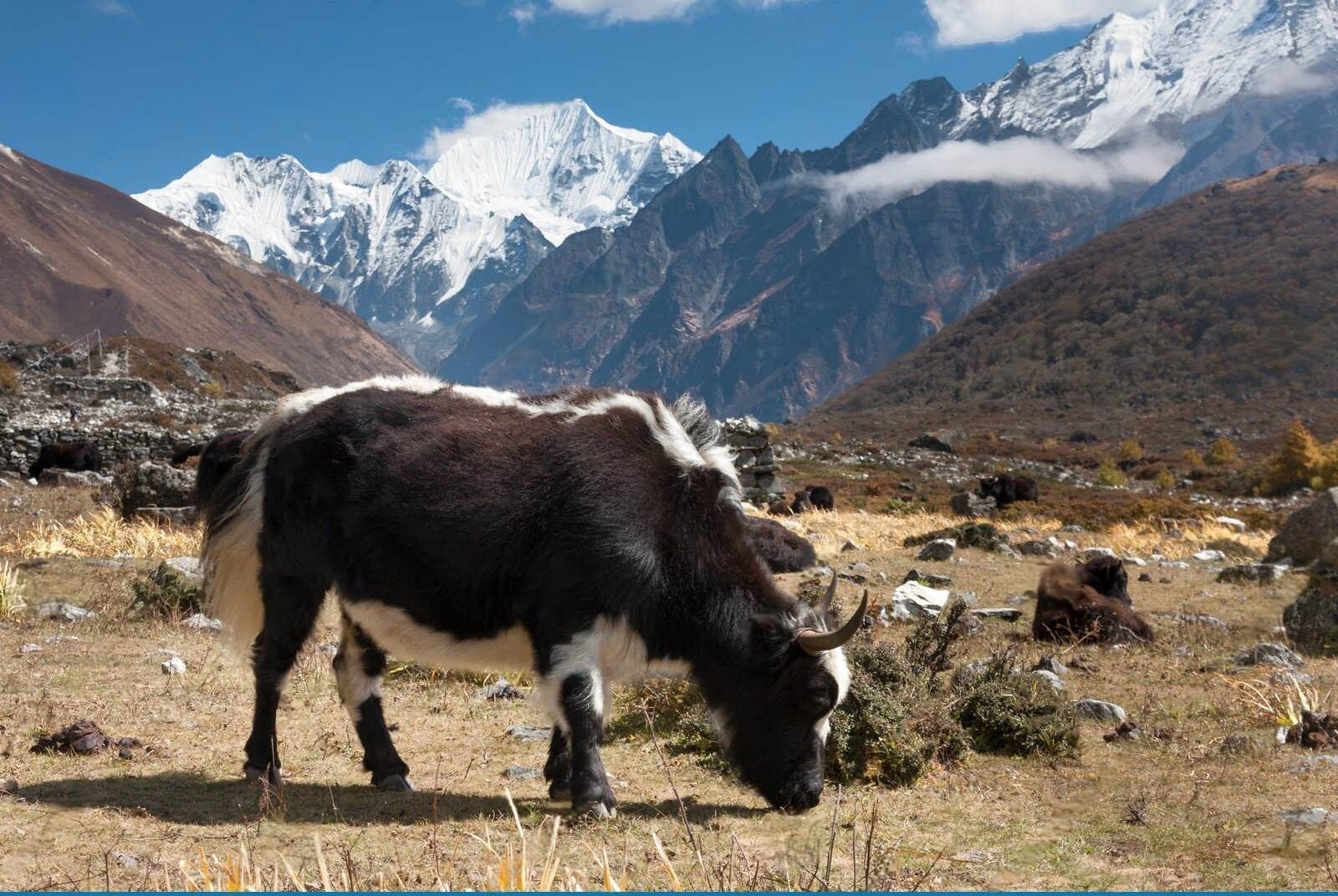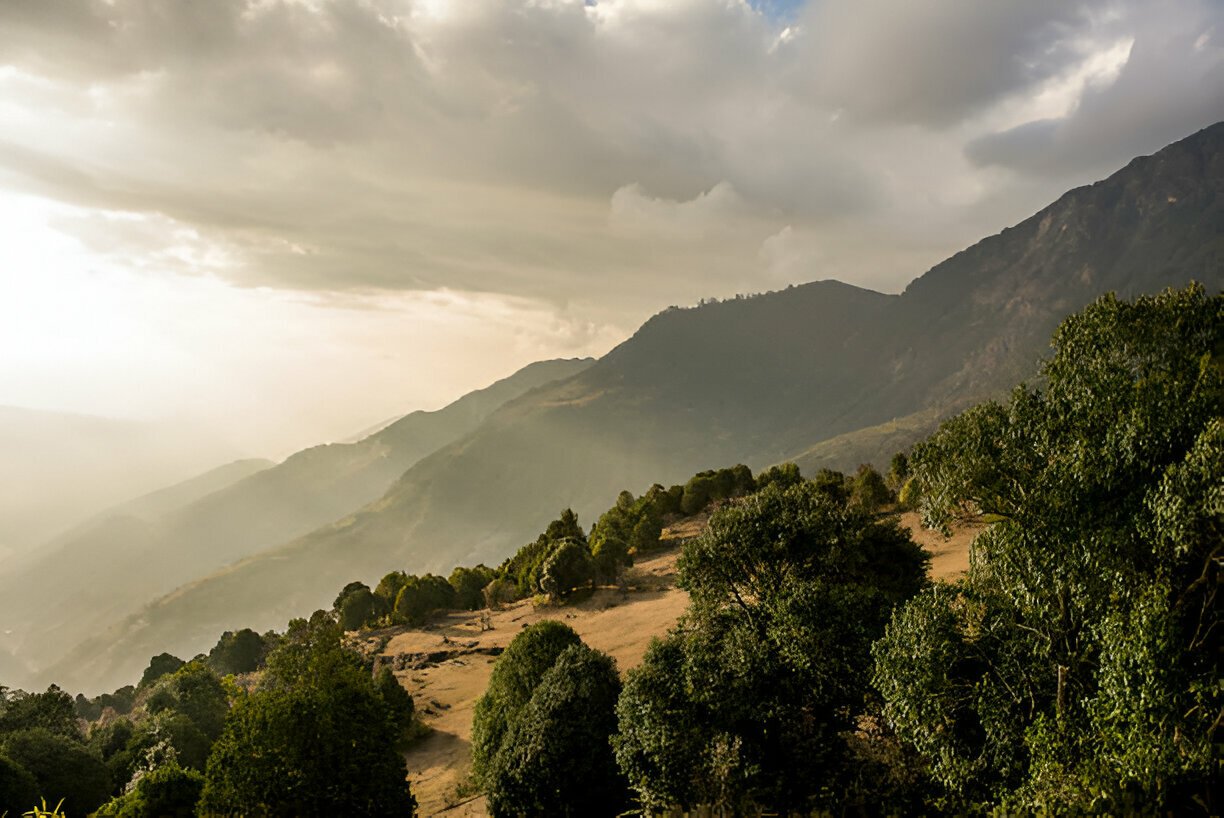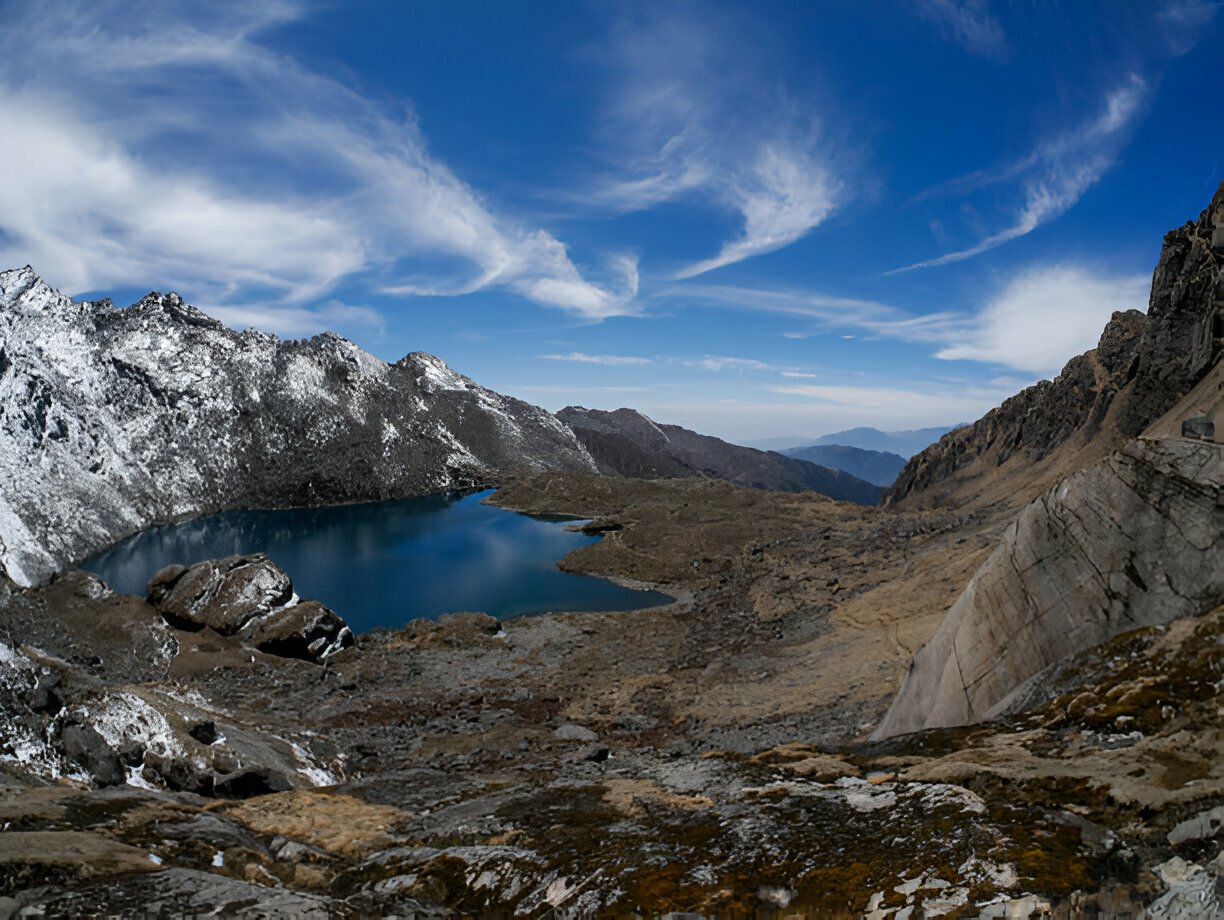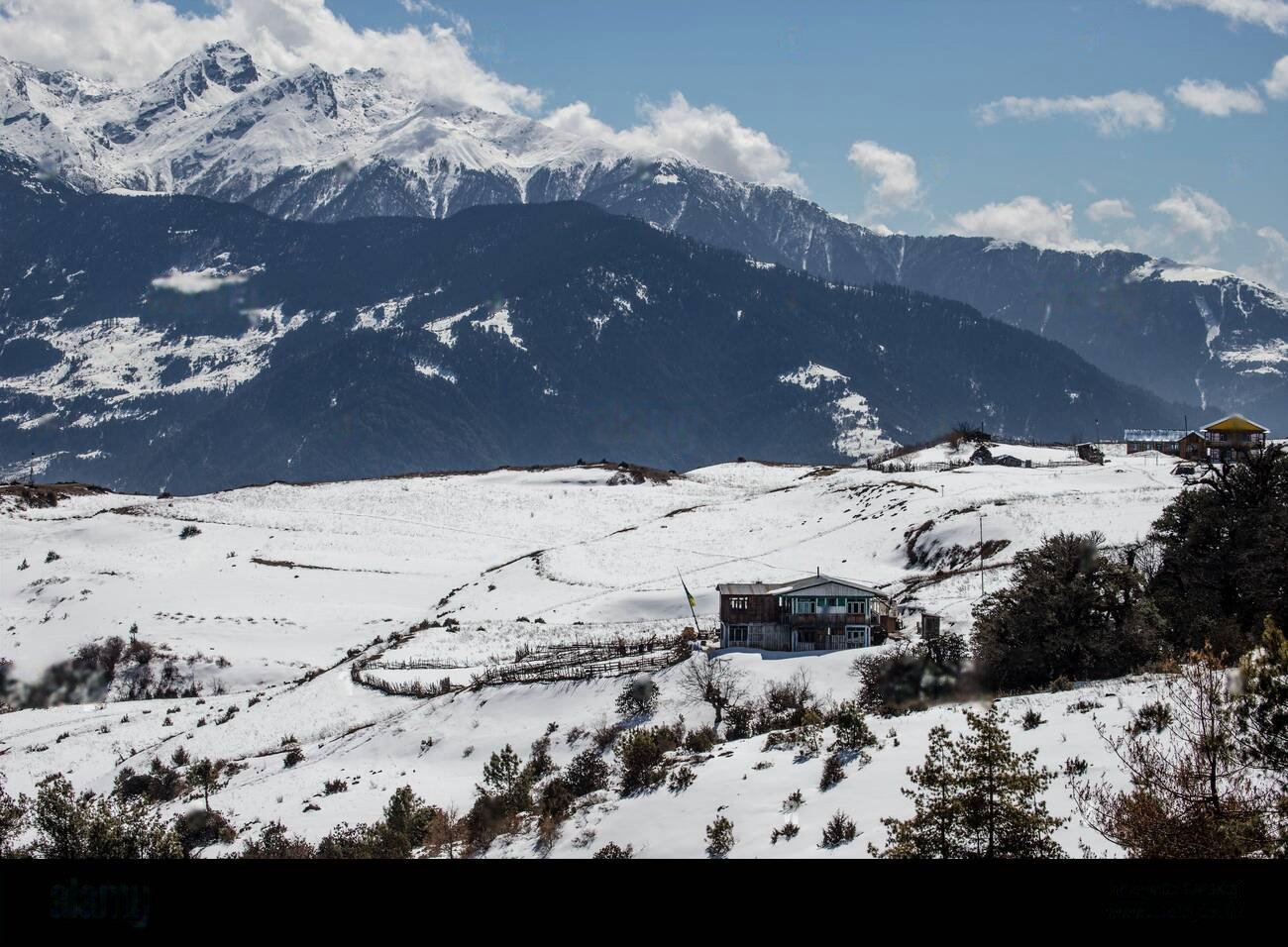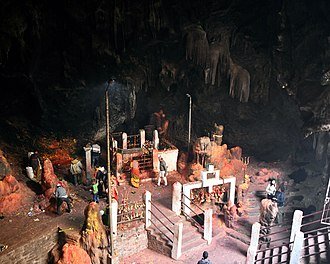 Detailed Information
Detailed Information
Halesi Mahadev Temple offers a profoundly mystical spiritual experience that transcends individual religious boundaries, creating an atmosphere where ancient beliefs converge within the primordial setting of sacred caves. What distinguishes this site is its rare tri-religious significance and the palpable sense of timelessness that envelops visitors as they descend into the earth to encounter the divine.
As you approach the site after a journey through the rugged hills of eastern Nepal, the limestone outcrop housing the caves appears suddenly against the landscape, seemingly suspended between earth and sky. The pilgrimage truly begins with the ascent of 108 stone steps (a sacred number in both Hindu and Buddhist traditions) leading to the main entrance, a physical journey that serves as preparation for the spiritual transition to come. Each step represents the shedding of worldly attachments and the gradual approach to sacred space.
Upon entering the main Mahadev Cave, visitors experience an immediate sensory transformation. The temperature drops noticeably, sounds from the outside world fade away, and eyes slowly adjust to the dim light illuminating stalactites and stalagmites that have evolved into objects of veneration over centuries. The cavernous main chamber extends into darkness, its full extent revealed gradually by the light of butter lamps and the occasional electric bulb. The acoustics of the space amplify even the softest chants and prayers, creating a continuous sacred soundscape that seems to emanate from the stone itself.
The cultural tapestry of Halesi is uniquely rich, with distinct religious traditions coexisting and sometimes blending in fascinating ways. Hindu priests tend to the sacred Shiva lingam in the main chamber, while Buddhist lamas maintain the shrines associated with Padmasambhava in adjacent areas. Indigenous Kirat shamans perform their traditional rituals at specific times, honoring ancestral connections to this sacred landscape. This religious pluralism is not merely tolerant coexistence but a profound recognition of the site's multivalent spiritual power.
Throughout the day, the atmosphere within the caves shifts subtly. Early morning brings solitary meditators seeking the profound silence of the deeper chambers. By mid-morning, family groups arrive to perform rituals marking important life transitions. Afternoon sees pilgrims from further afield who have traveled days to reach this remote sanctuary. As evening approaches, the cave interior transforms again as hundreds of butter lamps create pools of golden light against the ancient limestone, and the evening aarti (ritual of light) fills the space with song and devotion.
Halesi Mahadev Temple offers a profoundly mystical spiritual experience that transcends individual religious boundaries, creating an atmosphere where ancient beliefs converge within the primordial setting of sacred caves. What distinguishes this site is its rare tri-religious significance and the palpable sense of timelessness that envelops visitors as they descend into the earth to encounter the divine.
As you approach the site after a journey through the rugged hills of eastern Nepal, the limestone outcrop housing the caves appears suddenly against the landscape, seemingly suspended between earth and sky. The pilgrimage truly begins with the ascent of 108 stone steps (a sacred number in both Hindu and Buddhist traditions) leading to the main entrance, a physical journey that serves as preparation for the spiritual transition to come. Each step represents the shedding of worldly attachments and the gradual approach to sacred space.
Upon entering the main Mahadev Cave, visitors experience an immediate sensory transformation. The temperature drops noticeably, sounds from the outside world fade away, and eyes slowly adjust to the dim light illuminating stalactites and stalagmites that have evolved into objects of veneration over centuries. The cavernous main chamber extends into darkness, its full extent revealed gradually by the light of butter lamps and the occasional electric bulb. The acoustics of the space amplify even the softest chants and prayers, creating a continuous sacred soundscape that seems to emanate from the stone itself.
The cultural tapestry of Halesi is uniquely rich, with distinct religious traditions coexisting and sometimes blending in fascinating ways. Hindu priests tend to the sacred Shiva lingam in the main chamber, while Buddhist lamas maintain the shrines associated with Padmasambhava in adjacent areas. Indigenous Kirat shamans perform their traditional rituals at specific times, honoring ancestral connections to this sacred landscape. This religious pluralism is not merely tolerant coexistence but a profound recognition of the site's multivalent spiritual power.
Throughout the day, the atmosphere within the caves shifts subtly. Early morning brings solitary meditators seeking the profound silence of the deeper chambers. By mid-morning, family groups arrive to perform rituals marking important life transitions. Afternoon sees pilgrims from further afield who have traveled days to reach this remote sanctuary. As evening approaches, the cave interior transforms again as hundreds of butter lamps create pools of golden light against the ancient limestone, and the evening aarti (ritual of light) fills the space with song and devotion.

From $0
Price Varies from Group Size
Success
Here goes about why the success toast occurred.
 Activity Outline
Activity Outline
Approach and Main Cave Entrance
Mahadev Cave Exploration
Buddhist Maratika Cave
Descent to Parvati and Bhairav Caves
Kirat Cultural Perspectives
Meditation Retreat Spaces
Hilltop Temple and Panoramic Views
Evening Aarti and Cultural Performance
 Good to Know
Good to Know
Appropriate footwear is essential as cave floors can be slippery; flashlights are recommended for exploring deeper recesses beyond the lit areas.
Cultural Highlights
Living Heritage: Continuous worship traditions dating back thousands of years
Shivaratri Festival: Major celebration with night-long rituals and cultural performances
Sakela Ritual: Biannual Kirat ceremony celebrating nature and ancestral deities
Buddhist Pilgrimage: Important destination for Tibetan and Himalayan Buddhist practitioners
Folk Music Tradition: Unique devotional music combining elements from multiple cultural influences
Visitor Etiquette
Remove shoes before entering the main cave sanctum
Dress modestly with shoulders and knees covered
Speak quietly in respect of meditating practitioners
Ask permission before photographing people in worship
Refrain from touching religious objects and natural formations
Follow guidance of local priests or guardians when navigating sacred areas
No smoking or consumption of alcohol or meat within the cave complex
Nearby Attractions
Dudh Koshi River: Opportunities for rafting and fishing (12 km)
Diktel: District headquarters with local markets and cultural attractions (25 km)
Halesi Monastery: Tibetan Buddhist monastery with traditional architecture (1 km)
Bakhuwa Danda: Viewpoint offering Himalayan panoramas (15 km)
Traditional Kirat Villages: Authentic cultural experiences with indigenous communities (various locations 5-20 km)
 Reviews
Reviews
 FAQs (Frequently Asked Questions)
FAQs (Frequently Asked Questions)
Your queries are answered.
How old is the worship tradition at Halesi Mahadev?
Archaeological evidence suggests human ritual activity in these caves dating back at least 3,000 years, with some scholars proposing even earlier usage. The earliest textual references appear in medieval Tibetan Buddhist texts describing Padmasambhava's visit in the 8th century CE. Hindu scriptures mention the site in texts from approximately the 10th-12th centuries. However, the oral traditions of the Kirat people claim much earlier significance. The continuous layering of religious meaning over millennia makes Halesi a living archaeological site where ancient practices remain vital in contemporary worship.
What is the best time of year to visit Halesi Mahadev?
October through April offers the most comfortable weather conditions. The winter festival of Shivaratri (February-March) provides the most vibrant cultural experience, with thousands of pilgrims and elaborate ceremonies lasting through the night. Buddha Jayanti in May is significant for Buddhist pilgrims. The monsoon season (June-September) brings lush landscapes but can make access challenging due to road conditions. Spring and autumn generally offer clear skies and moderate temperatures ideal for appreciating both the cave complex and the surrounding natural beauty.
How difficult is the journey to reach Halesi Mahadev?
Access has improved significantly in recent years with better road connections, though the final approach remains adventurous. From Kathmandu, the journey involves either a 40-minute flight to Lamidanda followed by a 3-hour drive, or a 10-12 hour direct drive. The final ascent to the cave entrance requires climbing 108 steep stone steps, which can be challenging for those with limited mobility. During festival periods, basic palanquin services are sometimes available for elderly or disabled pilgrims. The remote location has helped preserve the site's authentic atmosphere, making the journey itself part of the pilgrimage experience.
Are there accommodations available near the caves?
Several modest guesthouses and a pilgrims' rest house operate year-round in the small settlement near the cave complex. These provide basic but clean accommodations with traditional Nepali meals. During major festivals, many visitors also stay in temporary accommodations or camping arrangements. More comfortable hotels can be found in Diktel (25 km away) or Lamidanda (40 km). For a more immersive experience, some nearby monasteries offer simple guestrooms for spiritual practitioners seeking a longer stay, though these typically require advance arrangements.
What geological processes formed these caves?
The Halesi caves were formed through the slow dissolution of limestone by slightly acidic rainwater over millions of years—a process known as karstification. The distinctive stalactites and stalagmites continue to form as mineral-rich water drips from the ceiling. What makes these caves geologically unusual is their formation within an isolated limestone outcrop rather than a larger karst system. The natural stone formations that have become objects of religious veneration are the result of these same geological processes, creating a fascinating intersection of natural science and spiritual interpretation.
Is Halesi Mahadev suitable for children or elderly visitors?
The site can be enjoyed by visitors of all ages, though with certain considerations. The 108 steps to the entrance present a moderate physical challenge, and some cave passages involve ducking through low ceilings or navigating uneven surfaces. Children generally find the cave exploration exciting, though they should be closely supervised due to some steep drops and dark areas. Elderly visitors may need to take the ascent slowly and perhaps limit exploration to the main chamber rather than the more physically demanding lower caves. During major festivals, the site becomes extremely crowded, which may be overwhelming for both very young children and elderly visitors.
How has the 2015 earthquake affected Halesi Mahadev?
While many religious sites in Nepal suffered significant damage during the 2015 earthquake, Halesi Mahadev remained remarkably intact due to the natural strength of its cave structure. Some minor rock falls occurred in peripheral areas, and a few external shrine buildings sustained damage, but the main cave chambers and sacred formations were preserved. Local communities view this preservation as miraculous and a testament to the site's divine protection. Restoration work on damaged external structures was completed by 2017, and all areas are now fully accessible to visitors.




